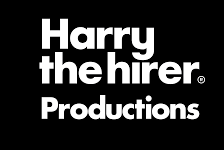News
26 Oct 2015
Roadskills: Gurrumul Yunupingu
Subscribe to CX E-News
Indigenous Australian musician Geoffrey Gurrumul Yunupingu, known simply as Gurrumul, sings in both English and his native Yolngu language.
Born blind, Gurrumul plays the drums, keyboards, guitar (a right-hand-strung guitar played left- handed) and didgeridoo, but it is the clarity of his singing voice that stuns audiences worldwide. In July this year, he released his third studio album, The Gospel Album which debuted at number 3 on the ARIA Charts.
Veteran Australian front of house engineer Tim Millikan has been working with Gurrumul the past twelve months and describes his voice as the most incredible he has ever heard. In fact Tim stated that the tour was one of the most satisfying he has done in twenty years.
“You get through your day setting up, time aligning, tuning and line checking then Gurrumul walks on stage, sits down and starts singing and every time I’m blown away,” he said. “It’s just unbelievable. He’s one of those artists you really need to see live because his presence is astounding even though he talks very little as he is so shy. He comes out with this amazing cross blend of cultures that seems to hit home with everyone.”
FOH Engineer – Tim Millikan
Gurrumul is escorted onto the stage by his musical director and bass player Michael Hohnen who sits him down and hands him his guitar. Michael then moves the Shure Beta 58 microphone into position and once Gurrumul has felt the microphone on his lips, he knows where it is and is on it the whole time.
“From then on it’s really easy as he doesn’t sway like Stevie Wonder, staying in front of the microphone the whole time,” added Tim. “There is something about his shows that are always different although I can’t pinpoint what it is. They are never routine; this time we had a twenty-four piece choir that we picked up locally in every city.”
Fortunately for Tim, Gurrumul and his band are very quiet on stage which means he is not fighting noise from off the stage.
“That means as there are a lot of acoustic instruments being used, I can open everything up and give it all that air and ambience back again which makes it super dynamic,” remarked Tim. “But because it’s not a loud rock gig, it’s got all that control and warmth in it as you can just leave all that stuff in as it is such low levels. It’s a rich, open sound that gives the audience more of a connection to the artist.”
An identical monitor control package comprising a Yamaha PM5D console, d&b Audiotechnik M4monitors and L’Acoustics 108P speakers on stands for choir fill, was picked up in every city with Cam Elias touring as monitor engineer. However, Tim had to deal with house systems on the tour and everyday there was a different console and speaker system.

“I think there were only two shows on the whole tour where I had the same Venue Profile console,” he commented. “I had a Midas Heritage 3000, DiGiCo SD7, Studer Vista 5, DiGiCo SD10, plus Solid State Logic and Studer Vista 8 at the ABC. Most of the shows I have done with Gurrumul have been on a variety of consoles so I have lots of show files, in fact I think I have one for just about every console which is handy!”
Similarly, the PA systems were varied but Tim pointed out that today’s modern line array systems all sound good.
“Most of the house systems were fine although some were a bit light on subs as they were theatre systems,” he added. “But as we’re not a huge rock band I wasn’t relying on heaps of sub anyway. The Canberra Theatre show was a particularly good show in the sense that we turned up and everything was done including patch. We simply walked in and there it was, which was awesome.”
Tim is a Waves endorsee and for Gurrumul he uses effects such as TrueVerb, C4 Multiband Compressor, V-Comp Vintage Compressor, V-EQ Vintage equalizer, and an H-Delay Analogue Delay Plugin.
“With the DiGiCo consoles we weren’t running Soundgrid so I just used the onboard effects which were all fine,” he said. “Over the years I have built a nice vocal reverb which is the basis for everything. You can then open your reverb times to suit various artists. It’s a good starting point for me, I can just drop those presets in and away I go. With something less familiar such as the DiGoCo or the Studers, the onboard effects are pretty good – it’s just a matter of fine tuning them a little, cleaning everything up with a pair of headphones and a microphone. Once I’m pretty sure that’s alright I’ll open the PA to check the reverb tails to make sure they’re doing what they are supposed to and that they’re not going to clutter anything in the mix.
“My idea with effects is that you want to create a mood and depth of field without people actually noticing the effect.”
For microphone Gurrumul prefers the feel of a Shure Beta 58 whilst the rest of the microphones are fairly standard. On the drums there were Sennheiser 901 and 902’s for kick drums, Shure 57 top and bottom on snares, AKG 451 on hats, AKG 414 as overheads, and Sennheiser 904’s on toms. Audio Technica 3060 were used for electric guitar, Beyerdynamic 88 on bass and a couple of DI’s. For the choir there was an assortment of microphones including Neumann KM 184 and eight AKG 414’s.
“We had the choir formation in a V-shape with the point of the V at the rear of the stage,” explained Tim. “Six of them were on a riser and six on the floor in front of them so we had to make sure they kept close together with the microphones in tight enough to lose the ambient wash that you get with putting multiple microphones up in a big open space. However they mustn’t be close enough to pick up one person in particular rather than an ensemble.”
Tim admits that although a Gurrumul show may seem fairly standard it can be difficult to mix due to all of the acoustic instruments and the fact that Gurrumul often sings in his native language.
“It’s always harder to mix the vocal in a language you’re not used to as it’s difficult to pick whether it’s balanced in the mix or not,” he said. “The secret to mixing Gurrumul is to bed everything in together, not to have his vocal up front and then the band down below it. The power comes from the fact that the band are as dynamic as him and that’s what gives it its natural power. I can let them do the work as opposed to me having to push everything.”
First published in CX Magazine (October, 2015)

Subscribe
Published monthly since 1991, our famous AV industry magazine is free for download or pay for print. Subscribers also receive CX News, our free weekly email with the latest industry news and jobs.









